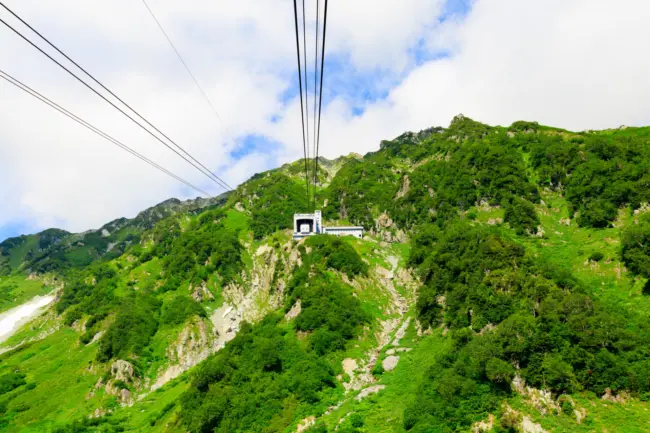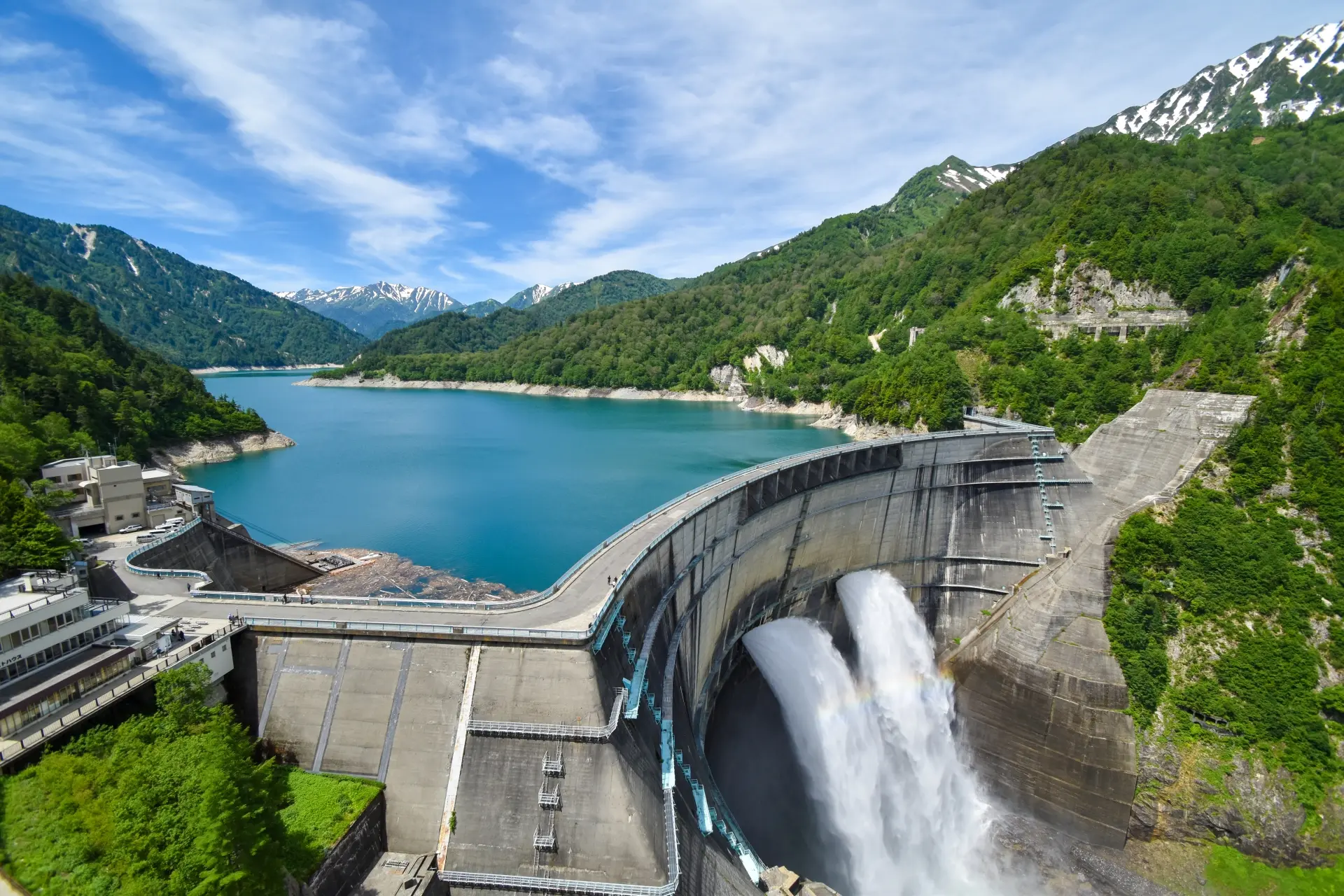+ Explore Other Areas
Tokyo, Osaka, Kyoto, Hokkaido, Fukuoka, Okinawa, Nara, Kanagawa, Aichi, Hiroshima, Yamanashi, Nagano, Oita, Gifu, Ishikawa, Shizuoka, Hyogo, Kumamoto, Miyagi, Wakayama, Nagasaki, Tochigi, Kagawa, Niigata, Kagoshima, Okayama, Chiba, Iwate, Aomori, Shiga, Gunma, Fukushima, Toyama, Ehime, Mie, Ibaraki, Saitama, Yamagata, Saga, Kochi, Tokushima, Miyazaki, Yamaguchi, Akita, Tottori, Fukui, Shimane
Toyama, nestled along the Sea of Japan, is a prefecture renowned for its breathtaking natural landscapes, historic villages, and fresh seafood. Known as the gateway to the Tateyama Kurobe Alpine Route, Toyama offers a mix of stunning mountain adventures and tranquil coastal scenery.

Its vibrant culture and warm hospitality make it a must-visit destination for travelers seeking unique experiences.
From the towering snow walls of Tateyama to the quaint charm of Gokayama, Toyama provides unforgettable sights and activities. Whether you’re hiking in the Japanese Alps or savoring its famed seafood, Toyama promises a journey filled with natural beauty and cultural richness.
Top Areas to Explore in Toyama
1. Tateyama Kurobe Alpine Route

- Why Visit: A spectacular journey through the Northern Japanese Alps, featuring iconic snow walls and breathtaking views.
- Highlights:
- Snow Corridor: Walk along the towering snow walls, reaching up to 20 meters high in spring.
- Murodo Plateau: The highest point on the route, offering panoramic mountain views and hiking trails.
- Kurobe Dam: Japan’s tallest dam, surrounded by lush scenery and a testament to engineering excellence.
2. Toyama Bay

- Why Visit: A scenic coastal area known for its incredible seafood and picturesque views of the Japanese Alps.
- Highlights:
- Fresh Seafood: Enjoy seasonal delights like firefly squid in spring and yellowtail in winter.
- Shinminato Bridge: A striking modern bridge offering stunning views of the bay and beyond.
- Mirage Land: A family-friendly amusement park with attractions and seaside views.
3. Gokayama

- Why Visit: A UNESCO World Heritage Site featuring traditional gassho-zukuri farmhouses and a glimpse into rural Japan.
- Highlights:
- Ainokura Village: Stroll through this quaint village with beautifully preserved thatched-roof houses.
- Local Crafts: Learn traditional washi paper-making, a skill passed down for generations.
- Seasonal Views: Admire snow-covered farmhouses in winter or lush greenery in summer.
4. Kurobe Gorge

- Why Visit: A stunning gorge known for its scenic train ride and beautiful natural landscapes.
- Highlights:
- Kurobe Gorge Railway: Ride this narrow-gauge train through deep valleys and over impressive bridges.
- Onsen Hot Springs: Relax in open-air baths surrounded by the gorge’s dramatic cliffs.
- Autumn Foliage: Visit in fall to see the gorge adorned with vibrant red and gold leaves.
5. Takaoka

- Why Visit: A historic city known for its bronze craftsmanship, traditional temples, and vibrant festivals.
- Highlights:
- Takaoka Daibutsu: One of Japan’s three great Buddha statues, standing tall as a symbol of the city.
- Kanaya-machi: Explore the well-preserved streets of this historic district, known for its copperware workshops.
- Takaoka Mikurumayama Festival: Witness this UNESCO-listed festival featuring ornate floats and traditional performances.
Experience Toyama Cuisine
Toyama is famous for its seafood, thanks to the nutrient-rich waters of Toyama Bay. Indulge in delicacies like hotaru ika (firefly squid) in spring and buri (yellowtail) in winter. Try masuzushi, a pressed sushi dish wrapped in bamboo leaves, or enjoy shiroebi (white shrimp), often referred to as the “jewel of Toyama Bay.”
Pair your meal with locally brewed sake, crafted with pure mountain water, for an authentic taste of Toyama.
Toyama: Basic Information
Location
Toyama is located in central Japan, along the Sea of Japan, and is part of the Chubu region. It is surrounded by the Japanese Alps and lush coastal plains.
Neighboring Areas
Ishikawa, Gifu, Nagano, Niigata
Best Seasons to Visit
- Spring (March to May): Witness the towering snow walls on the Tateyama Kurobe Alpine Route and enjoy cherry blossoms in Takaoka.
- Summer (June to August): Hike the Japanese Alps or explore Toyama Bay under clear skies.
- Autumn (September to November): Admire vibrant foliage in Kurobe Gorge and Gokayama.
- Winter (December to February): Experience the serene beauty of snow-covered Gokayama and indulge in fresh yellowtail from Toyama Bay.
How to Get to Toyama
By Train
The Hokuriku Shinkansen connects Tokyo to Toyama in about 2 hours. Local trains provide access to other areas like Takaoka, Gokayama (via bus), and the Tateyama Kurobe Alpine Route.
By Bus
Highway buses link Toyama with major cities such as Osaka, Kyoto, and Kanazawa, providing convenient and budget-friendly options.
Transportation in Toyama
Getting around Toyama is easy with a variety of transportation options:
- Trains: The JR Hokuriku Line and Toyama Chiho Railway connect major cities and attractions, including Tateyama and Takaoka.
- Buses: Local buses and sightseeing routes make it convenient to visit remote spots like Gokayama and Kurobe Gorge.
- Rental Cars: Renting a car is recommended for exploring the Tateyama Kurobe Alpine Route and rural areas at your own pace.
- Bicycles: Bike rentals are available in Toyama City, perfect for exploring the city’s flat and scenic routes.


